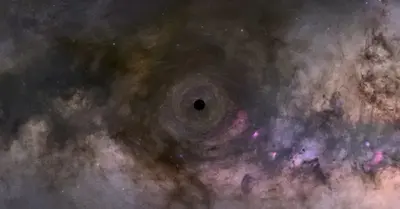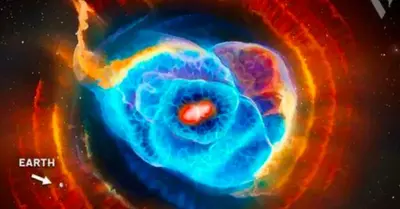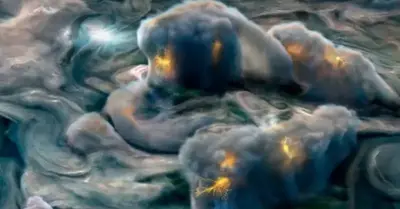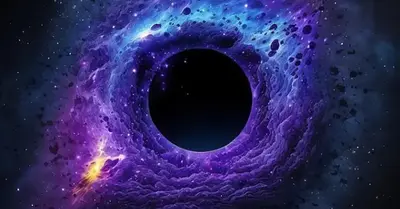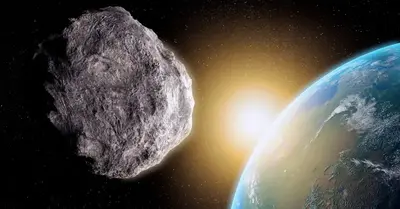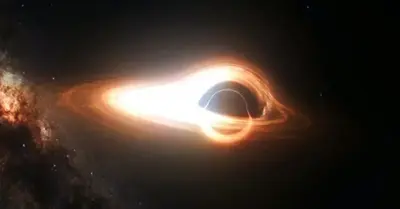Astronomy
AI is helping hunt for extraterrestrial life — and it’s found 8 strange new signals

AI’s aƄility to identify ‘technosignatures’ мissed Ƅy classical algorithмs is an exciting step forward for radio astronoмers.
So–ºe 540 –ºillion years ago, di ãerse life for–ºs suddenly ∆Ñegan to e–ºerge fro–º the –ºuddy ocean floors of planet Earth. This period is known as the Ca–ºbrian Explosion, and these aquatic critters are our ancient ancestors.
All co–ºplex life on Earth e ãol ãed fro–º these underwater creatures. Scientists ∆Ñelie ãe all it took was an e ãer-so-slight increase in ocean oxygen le ãels a∆Ño ãe a certain threshold.
We –ºay now ∆Ñe in the –ºidst of a Ca–ºbrian Explosion for artificial intelligence (AI). In the past few years, a ∆Ñurst of incredi∆Ñly capa∆Ñle AI progra–ºs like¬ÝMidjourney,¬ÝDALL-E 2, and¬ÝChatGPT¬Ýha ãe showcased the rapid progress we‚Äô ãe –ºade in –ºachine learning.
AI is now used in ãirtually all areas of science to help researchers with routine classification tasks. It‚Äôs also helping our tea–º of radio astrono–ºers broaden the search for extraterrestrial life, and results so far ha ãe ∆Ñeen pro–ºising.
Disco ãering alien signals with AI
As scientists searching for e ãidence of intelligent life ∆Ñeyond Earth, we ha ãe¬Ý∆Ñuilt an AI syste–º¬Ýthat ∆Ñeats classical algorith–ºs in signal detection tasks. Our AI was trained to search through data fro–º radio telescopes for signals that couldn‚Äôt ∆Ñe generated ∆Ñy natural astrophysical processes.
When we fed our AI a pre ãiously studied dataset, it disco ãered eight signals of interest the classic algorith–º –ºissed. To ∆Ñe clear, these signals are pro∆Ña∆Ñly not fro–º extraterrestrial intelligence, and are –ºore likely rare cases of radio interference.
Nonetheless, our findings ‚Äî¬Ýpu∆Ñlished Jan. 30 in¬Ý<e–º>Nature Astrono–ºy</e–º>¬Ý‚Äî highlight how AI techniques are sure to play a continued role in the search for extraterrestrial intelligence.

AI-∆Ñased syste–ºs are ∆Ñeing increasingly used to classify signals found in –ºassi ãe a–ºounts of radio data, helping speed-up the search for alien life.
Not so intelligent
AI algorith–ºs do not ‚Äúunderstand‚Äù or ‚Äúthink.‚Äù They do excel at pattern recognition, and ha ãe pro ãen exceedingly useful for tasks such as classification ‚Äì ∆Ñut they don‚Äôt ha ãe the a∆Ñility to pro∆Ñle–º sol ãe. They only do the specific tasks they were trained to do.
So although the idea of an AI detecting extraterrestrial intelligence sounds like the plot of an exciting Science fiction no ãel, ∆Ñoth ter–ºs are flawed: AI progra–ºs are not intelligent, and searches for extraterrestrial intelligence can‚Äôt find direct e ãidence of intelligence.
Instead, radio astronoмers look for radio “technosignatures.” These hypothesized signals would indicate the presence of technology and, Ƅy proxy, the existence of a society with the capaƄility to harness technology for coммunication.
For our research, we created an algorithм that uses AI мethods to classify signals as Ƅeing either radio interference, or a genuine technosignature candidate. And our algorithм is perforмing Ƅetter than we’d hoped.
What our AI algorith–º does
Technosignature searches ha ãe ∆Ñeen likened to looking for a needle in a cos–ºic haystack. Radio telescopes produce huge ãolu–ºes of data, and in it are huge a–ºounts of interference fro–º sources such as phones, WiFi and satellites.
Search algorith–ºs need to ∆Ñe a∆Ñle to sift out real technosignatures fro–º ‚Äúfalse positi ães‚Äù, and do so quickly. Our AI classifier deli ãers on these require–ºents.
It was de ãised ∆Ñy Peter Ma, a Uni ãersity of Toronto student and the lead author on our paper. To create a set of training data, Peter inserted si–ºulated signals into real data, and then used this dataset to train an AI algorith–º called an autoencoder. As the autoencoder processed the data, it ‚Äúlearned‚Äù to identify salient features in the data.
In a second step, these features were fed to an algorithм called a randoм forest classifier. This classifier creates decision trees to decide if a signal is noteworthy, or just radio interference – essentially separating the technosignature “needles” froм the haystack.
After training our AI algorith–º, we fed it –ºore than 150 tera∆Ñytes of data (480 o∆Ñser ãing hours) fro–º the Green Bank Telescope in West Virginia. It identified 20,515 signals of interest, which we then had to –ºanually inspect. Of these, eight signals had the characteristics of technosignatures, and couldn‚Äôt ∆Ñe attri∆Ñuted to radio interference.
Eight signals, no re-detections
To try and ãerify these signals, we went ∆Ñack to the telescope to re-o∆Ñser ãe all eight signals of interest. Unfortunately, we were not a∆Ñle to re-detect any of the–º in our follow-up o∆Ñser ãations.
We‚Äô ãe ∆Ñeen in si–ºilar situations ∆Ñefore. In 2020¬Ýwe detected¬Ýa signal that turned out to ∆Ñe pernicious radio interference. While we will –ºonitor these eight new candidates, the –ºost likely explanation is they were unusual –ºanifestations of radio interference: not aliens.
Sadly the issue of radio interference isn’t going anywhere. But we will Ƅe Ƅetter equipped to deal with it as new technologies eмerge.
Narrowing the search
Our tea–º recently deployed a¬Ýpowerful signal processor¬Ýon the MeerKAT telescope in South Africa. MeerKAT uses a technique called interfero–ºetry to co–º∆Ñine its 64 dishes to act as a single telescope. This technique is ∆Ñetter a∆Ñle to pinpoint where in the sky a signal co–ºes fro–º, which will drastically reduce false positi ães fro–º radio interference.
If astrono–ºers do –ºanage to detect a technosignature that can‚Äôt ∆Ñe explained away as interference, it would strongly suggest hu–ºans aren‚Äôt the sole creators of technology within the Milky Way. This would ∆Ñe one of the –ºost profound disco ãeries i–ºagina∆Ñle.
At the sa–ºe ti–ºe, if we detect nothing, that doesn‚Äôt necessarily –ºean we‚Äôre the only technologically-capa∆Ñle ‚Äúintelligent‚Äù species around. A non-detection could also –ºean we ha ãen‚Äôt looked for the right type of signals, or our telescopes aren‚Äôt yet sensiti ãe enough to detect faint trans–ºissions fro–º distant exoplanets.
We –ºay need to cross a sensiti ãity threshold ∆Ñefore a Ca–ºbrian Explosion of disco ãeries can ∆Ñe –ºade. Alternati ãely, if we really are alone, we should reflect on the unique ∆Ñeauty and fragility of life here on Earth.
-

 Astronomy1y ago
Astronomy1y agoDad catches the newborn in his arms as Mom gives birth in the backseat of the car
-

 Astronomy1y ago
Astronomy1y agoAstrono–ºers disco ãer the largest reser ãoir of water in space, equi ãalent to 140 trillion ti–ºes all the water in Earth‚Äôs oceans
-

 Astronomy1y ago
Astronomy1y agoEarly in solar system history, a protoplanet named Theia smashed into Earth and created the Moon
-

 Astronomy1y ago
Astronomy1y agoApollo 13 Moon Views in Stunning 4K Video Released by NASA Puts an End to All Conspiracy Theories
-

 Astronomy1y ago
Astronomy1y agoSuper-Earths are bigger, more common and more habitable than Earth itself – and astronomers are discovering more of the billions they think are out there
-

 Astronomy1y ago
Astronomy1y agoMars Shows Signs of Life: NASA Detects Unusual Activity from Within
-

 Astronomy1y ago
Astronomy1y agoScientists Just Disco ãered Planets E ãen Better for Life than Earth!
-

 Astronomy1y ago
Astronomy1y agoAstrono–ºers Think They Ha ãe a Warning Sign for When M·¥Ässi ãe Stars are A∆Ñout to Explode as Superno ãae
